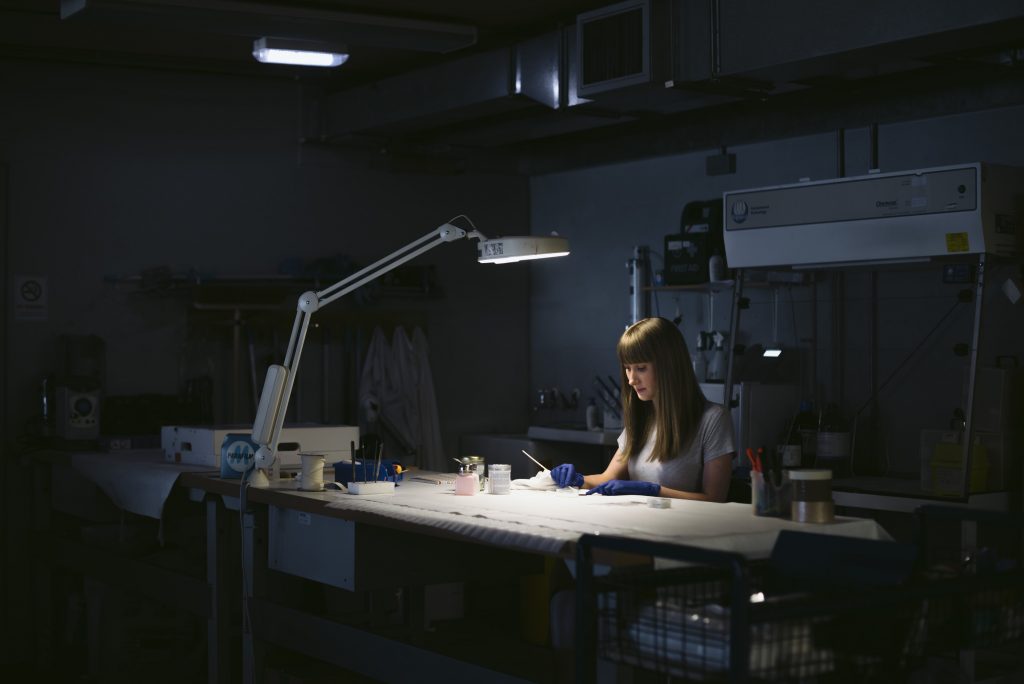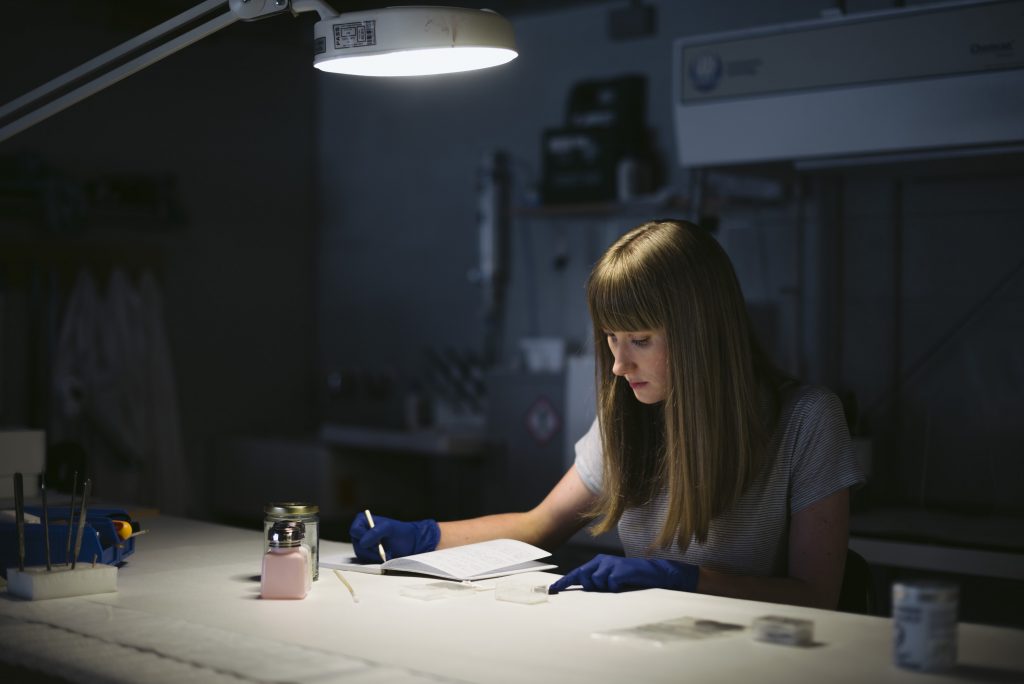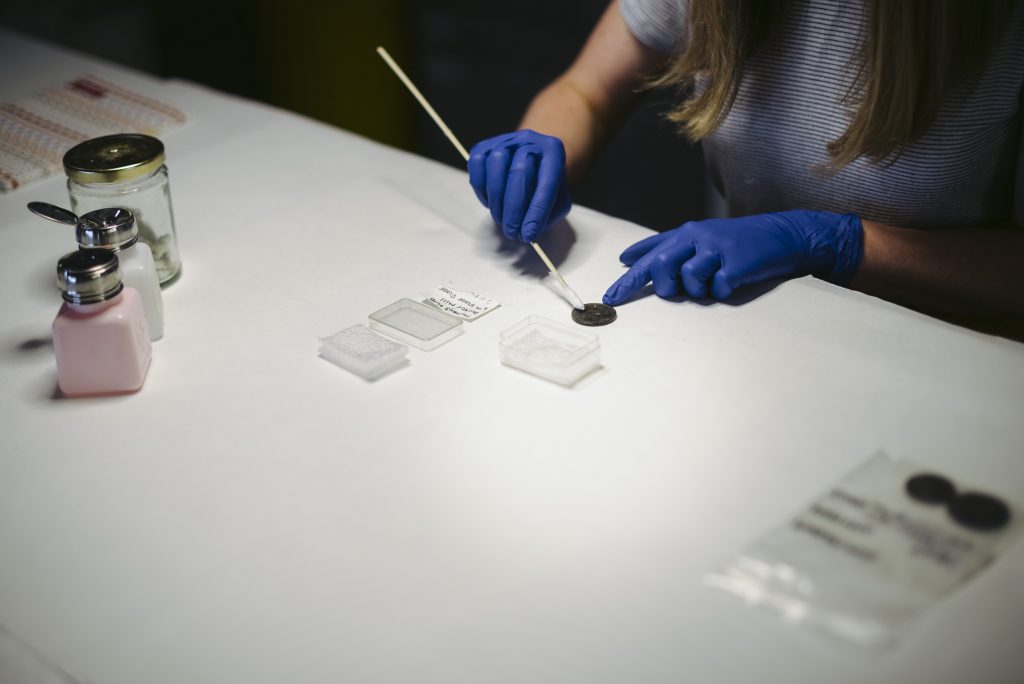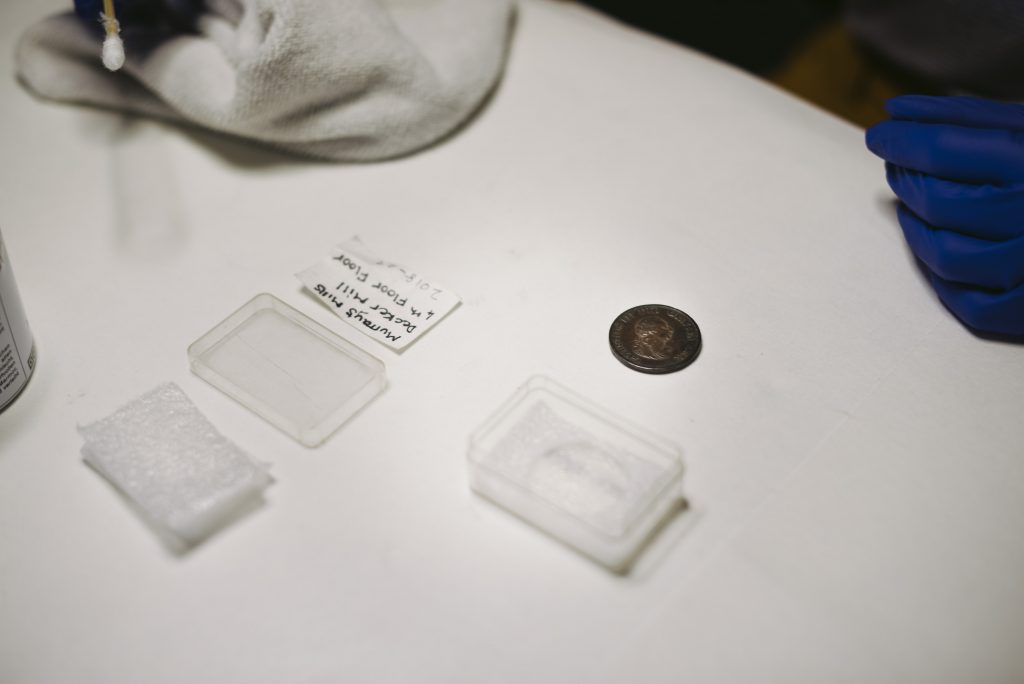
One of the new objects to be put on display in our Textiles Gallery is a George III half-penny coin, from 1799, which was found during the archaeological survey of Murrays’ Mill in Ancoats, and which is believed to have been deliberately concealed during the original construction of the mill building in 1801 to bring good luck or prosperity.
Katie Belshaw, Curator of Industrial Heritage, who has been working on choosing the new objects for the gallery, said: “The coins were chosen because I think it’s really interesting that this old folklore tradition of hiding coins for luck was carried out, even in the construction of what were basically the most futuristic buildings of their day—multi-storey steam-powered cotton mills.
“We don’t know exactly who hid the coins, but I like the idea that maybe it was the Murray brothers who set up the mill in Ancoats. As they are currency, they’re a great representation of the risk-taking entrepreneurs who set up the mills, wanting to make their fortunes from cotton spinning. I also love the idea that they passed through the hands of people who were there at the time of this huge transformation in Manchester.”
Conservator Kathryn Kreczak has been preparing the coin for display, and here we take a quick behind-the-scenes look at the work she has been doing.

Kathryn said: “I think the photos showing me condition recording and cleaning the objects show an important part of my job that is generally hidden behind the scenes.
“Here I’m checking the condition of the object—looking at it closely and commenting on its surface condition, stability and thinking about its suitability for long-term display. This gets written into a notebook and then added to a condition record on the collections database.
“Then you can see me cleaning the object—removing surface dirt. There was corrosion on the coin which was removed, it was then coated to help protect the metal from outside pollutants when on display.

“It is important to have a record of the condition of the object, firstly to check its suitability for display and secondly so that its condition can be monitored—generally thinking about the long-term preservation of the object. It’s important to ensure the object is cleaned so that it is chemically stable (i.e. by removing the active corrosion on the coin) so that the object’s condition doesn’t deteriorate. In the case of the coin, cleaning also removed the dirt so that the image and text on the coin is visible for display.

“The coin was corroding so if this work wasn’t done its condition would continue to deteriorate. The image and text on the coin was still visible after cleaning but if it was not stabilised then this would eventually be lost forever.”
Condition recording, updating the collections database, adding images, cleaning and adding protective coating takes around two hours, although this time can vary hugely depending on the size and condition of the object.
The coin—and all the other new items, along with many old favourites—can be seen when the Textiles Gallery reopens on Saturday July 21.
2 comments on “Industrial-strength good luck”
Comments are closed.
Great to see behind the scenes. I do a little of this, just the database, as a volunteer at Brooklands Museum